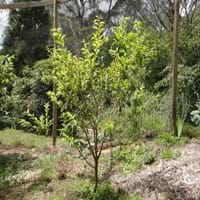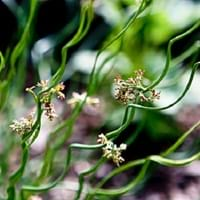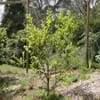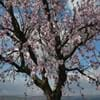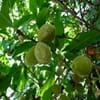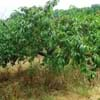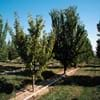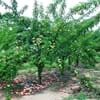What is
Life Span
Biennial
Perennial
Type
Fruit
Sedge or Rush
Origin
Not Available
World/Pandemic, North America, Europe, Russia/Siberia, Africa, Asia
Types
Flavorosa, Amigo, Eagle Egg
not available
Number of Varieties
25
99+
Not Available
Habitat
Wet lands
All sorts of environments, Banks, ditches, marshes, Shores of rivers or lakes
USDA Hardiness Zone
6-9
6-9
AHS Heat Zone
10-1
9-6
Sunset Zone
2a, 2b, 3a, 3b, 4, 5, 6, 7, 8, 9, 10, 11, 12, 14, 15, 16, 17, 18, 19, 20
H1, 1a, 1b, 2a, 2b, 3a, 3b, 4, 5, 6, 7, 8, 9, 10, 11, 12, 13, 14, 15, 16, 17, 18, 19, 20, 21, 22, 23, 24
Habit
Upright/Erect
Clump-Forming
Information
Plant Size
Minimum Height
460.00 cm
99+
45.70 cm
99+
Minimum Width
370.00 cm
99+
61.00 cm
99+
Plant Color
Flower Color
Not Available
Brown
Flower Color Modifier
Bicolor
Bicolor
Fruit Color
Green, Orange Red, Red, Yellow green
Not Available
Leaf Color in Spring
Several shades of Green
Green
Leaf Color in Summer
Not Available
Green
Leaf Color in Fall
Not Available
Green
Leaf Color in Winter
Light Green
Green, Tan, Sandy Brown
Shape
Leaf Shape
Palmately Lobed
Long hair-like leaves
Thorns
No
No
Season
Plant Season
Winter
Spring, Summer, Fall, Winter
Growing Conditions
Sunlight
Full Sun
Full Sun, Partial Sun
Growth Rate
Medium
Fast
Type of Soil
Clay, Loam, Sand
Clay, Loam, Sand
The pH of Soil
Acidic, Neutral, Alkaline
Acidic, Neutral
Soil Drainage
Well drained
Poorly Drained
Bloom Time
Spring
Early Summer, Summer, Late Summer, Early Fall
Repeat Bloomer
No
No
Tolerances
Drought
Drought
Care
Where to Plant?
Ground
Ground, Pot
How to Plant?
Transplanting
Divison, reseeds
Plant Maintenance
Medium
Medium
Watering Plants
Watering Requirements
Average Water Needs, Medium, Requires watering in the growing season, Water daily during growing season, Water Deeply
Does not require regular watering
In Summer
Lots of watering
Lots of watering
In Spring
Moderate
Moderate
In Winter
Average Water
Average Water
Soil
Soil pH
Acidic, Neutral, Alkaline
Acidic, Neutral
Soil Type
Clay, Loam, Sand
Clay, Loam, Sand
Soil Drainage Capacity
Well drained
Poorly Drained
Sun Exposure
Full Sun, Partial Sun
Full Sun, Partial Sun
Pruning
Remove damaged leaves, Remove dead branches, Remove dead leaves
Prune to control growth, Remove damaged leaves, Remove dead branches, Remove dead leaves
Fertilizers
All-Purpose Liquid Fertilizer, Apply 10-10-10 amount
All-Purpose Liquid Fertilizer
Pests and Diseases
Red blotch
Not Available
Plant Tolerance
Drought
Drought
Facts
Flowers
Showy
Insignificant
Flower Petal Number
Not Available
Single
Fruits
Showy Fruit
Yes
No
Edible Fruit
Yes
No
Fragrance
Fragrant Flower
Yes
No
Fragrant Fruit
Yes
No
Fragrant Leaf
No
No
Fragrant Bark/Stem
No
No
Showy Foliage
No
Yes
Showy Bark
No
No
Foliage Texture
Not Available
Fine
Foliage Sheen
Not Available
Glossy
Evergreen
No
No
Invasive
No
Sometimes
Self-Sowing
No
Yes
Attracts
Bees, Butterflies
Bumblebees, Flying insects
Allergy
Itchiness, Rash, Swelling
Unknown
Benefits
Uses
Aesthetic Uses
Not Available
Informal Hedge, Woodland margins
Beauty Benefits
Not Available
Not Available
Edible Uses
Insignificant
No
Environmental Uses
Air purification
Air purification
Plant Benefits
Medicinal Uses
Immunity
Not Available
Part of Plant Used
Fruits
Not Available
Other Uses
Jam, Jelly, Used As Food, Used in salads
woven into the covering of tatami mats
Used As Indoor Plant
No
No
Used As Outdoor Plant
Yes
Yes
Garden Design
Fruit / Fruit Tree
Bog Garden, Container, Mixed Border, Water Gardens
Scientific Name
Botanical Name
PRUNUS 'Spring Satin'
JUNCUS effusus f.Spiral
Common Name
Plumcot, Spring Satin Plumcot
Curly wurly
In Hindi
Plumcot
Corkscrew Rush
In German
Plumcot
Corkscrew Rush
In French
plumcot
Corkscrew Rush
In Spanish
plumcot
Corkscrew Rush
In Greek
Plumcot
Corkscrew Rush
In Portuguese
plumcot
Corkscrew Rush
In Polish
Plumcot
Corkscrew Rush
In Latin
Plumcot
Corkscrew Rush
Classification
Kingdom
Plantae
Plantae
Phylum
Vascular plant
Magnoliophyta
Class
Magnoliopsida
Liliopsida
Order
Ericales
Poales
Family
Rosaceae
Juncaceae
Genus
Prunus
Juncus
Clade
Angiosperms, Eudicots, Rosids
Angiosperms, Commelinids, Monocots
Tribe
Not Available
Not Available
Subfamily
Not Available
Not Available
Number of Species
25
99+
Not Available
|
||
|
||
|
